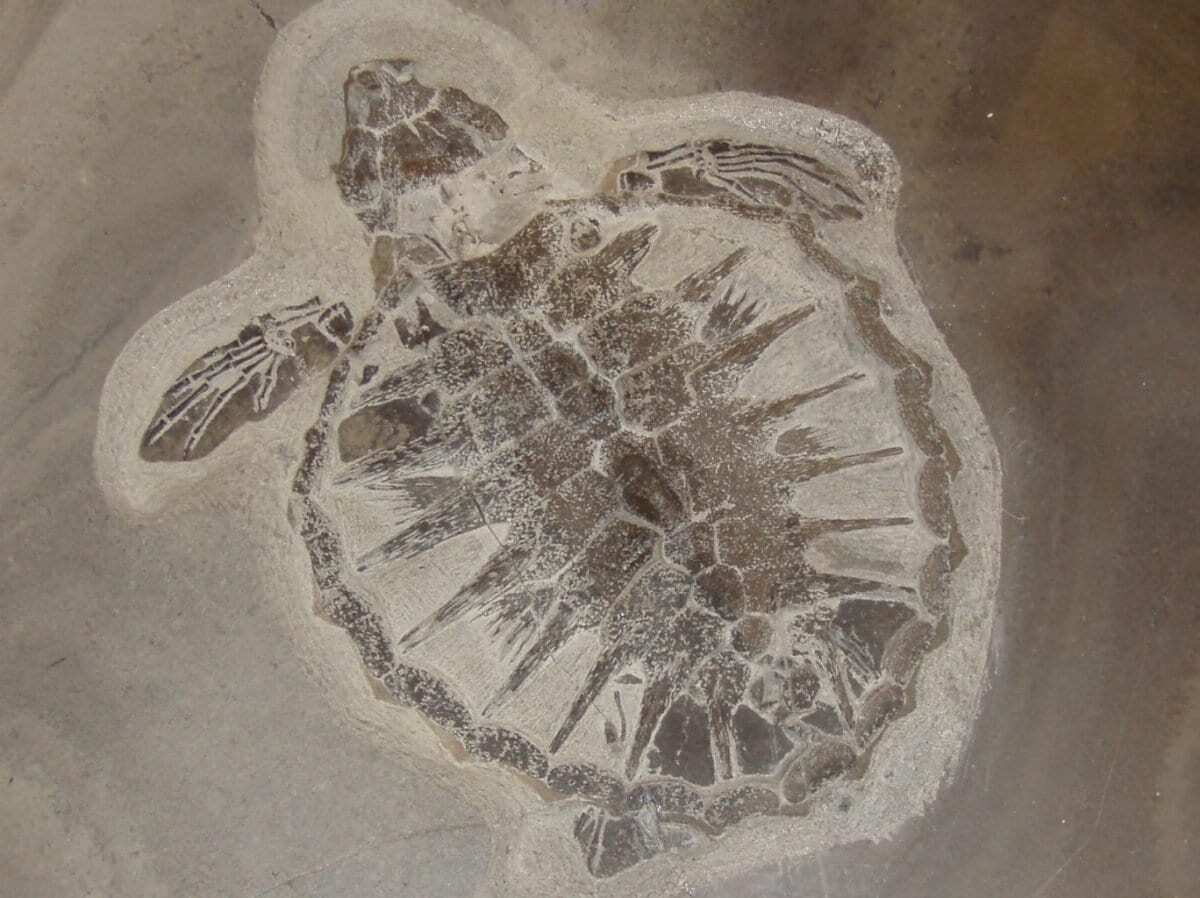Researchers at Lund University in Sweden have discovered well-preserved pigments and other biomolecules in a 54 million-year-old baby sea turtle. The molecular analyses show that the turtle’s shell contained pigments to protect it from harmful UV rays of the sun.
The researchers investigated the microscopic and molecular contents of soft tissues retrieved from a fossil that is approximately 54 million years old. The soft tissues derive from one of the world’s best preserved baby sea turtles, from northern Jutland in Denmark. The fossilised soft tissues consist of both the pigmented part of the shell and underlying skin/dermal tissues.
“Our results show that a number of biomolecules, which can be directly linked to the animal itself, are preserved in an identifiable form”, says Johan Lindgren, a researcher at Lund University.
Johan Lindgren – together with colleagues abroad as well as at his own department and at MAX IV Laboratory in Lund – studied the biomolecular inventory of the fossil turtle. The researchers identified residues of several different molecules, including beta-keratin, eumelanin, haemoglobin, and tropomyosin. Eumelanin is a pigment that provides dark skin colour also in humans.
The results of the study indicate that baby turtles had the same colour patterns 54 million years ago as they do today; that is, a dark back with light/pale edges. This colouration is an adaptation that provides protection against harmful UV radiation from the sun, but they also use the dark skin to increase their body heat, thereby growing faster. This phenomenon is called adaptive melanism and entails the animal’s ability to utilise colour for survival purposes.
The discovery of several biomolecules could, eventually, enable researchers to study the evolution of life at the molecular level through geological time.
“We have previously identified eumelanin in fossilised skin, but the fact that the organic matter from this baby turtle contained such a wide range of identifiable biomolecular remains came as a big surprise”, says Johan Lindgren.
Furthermore, the results of the study call for a revision of what fossils actually are and what they consist of. “Fossils are not only petrifactions, but can sometimes consist of parts of the original biological material” says Johan Lindgren.
Header Image Credit – Rene Sylvestersen





